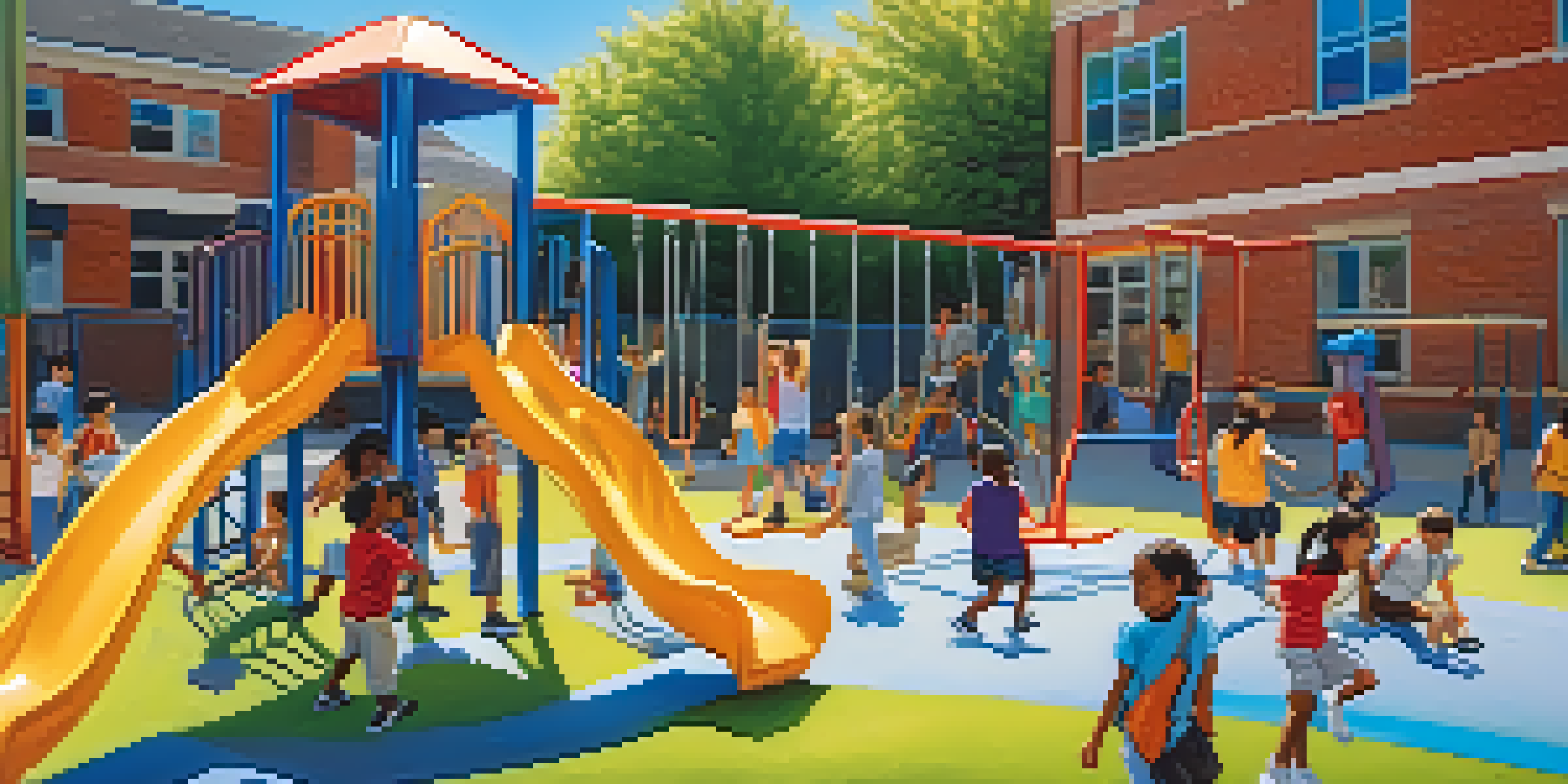Creating Safe Spaces on Social Media for Student Expression

Understanding the Importance of Safe Spaces Online
Creating safe spaces on social media is crucial for student expression. These environments allow students to share their thoughts and feelings without fear of judgment or harassment. When students feel safe, they are more likely to engage openly and authentically, leading to richer conversations.
The digital world is not just a reflection of reality; it is a new reality that we must navigate with care.
Consider the schoolyard as an analogy: just as students need a supportive playground to explore and interact, they also need a secure digital landscape. Safe spaces online can help mitigate issues like cyberbullying and mental health struggles that many students face today. By fostering these spaces, we can promote positive interactions and a sense of belonging.
Ultimately, the goal is to cultivate an environment where every student feels empowered to express themselves. By prioritizing safety and respect, we can transform social media into a platform for constructive dialogue and creativity.
Identifying Common Risks on Social Media Platforms
Navigating social media can be tricky for students, as various risks lurk beneath the surface. Cyberbullying, privacy invasion, and negative comparisons are just a few examples of the challenges they face. Understanding these risks is the first step in creating safe online spaces.

For instance, a student might feel pressured to conform to unrealistic beauty standards showcased on social media. This pressure can lead to anxiety or low self-esteem. Recognizing these issues allows educators and parents to provide guidance and support, helping students navigate the digital world more safely.
Safe Spaces Boost Student Expression
Creating safe online environments allows students to share their thoughts freely, fostering authentic engagement.
By addressing these risks head-on, we can better equip students with the tools they need to protect themselves online. This proactive approach not only fosters resilience but also strengthens the overall community.
Encouraging Positive Communication Among Students
Creating a culture of positive communication is essential in safe online spaces. Students should be encouraged to express themselves in ways that are respectful and constructive. This can involve sharing uplifting messages or celebrating each other’s achievements.
Inclusivity is not a nice-to-have, it's a must-have for any community that wants to thrive.
An example is a digital gratitude wall where students post positive notes about their peers. Such platforms can foster appreciation and camaraderie, reducing negativity and promoting a supportive atmosphere. Positive communication not only enhances relationships but also cultivates empathy among students.
By modeling and encouraging positive interactions, we can create a ripple effect. When students witness kindness and support in their online spaces, they are more likely to replicate those behaviors in their own interactions.
Utilizing Moderation Tools to Enhance Safety
Moderation tools are essential for maintaining safe online environments. Features like comment filtering, reporting mechanisms, and content moderation can help manage potentially harmful interactions. These tools empower students to take control of their online experiences.
Imagine a classroom where a teacher actively monitors discussions to ensure respectful dialogue. Similarly, online moderation tools serve as guardians against harmful content. They help create a buffer that allows students to express themselves freely while ensuring that safety is prioritized.
Understanding Risks Enhances Safety
Recognizing common social media risks equips students and educators to better navigate and protect online interactions.
Implementing these tools can significantly reduce incidents of cyberbullying and harassment. When students know that there are measures in place to protect them, they are more likely to engage in open and honest conversations.
Fostering Inclusivity in Online Spaces
Inclusivity is a cornerstone of safe online spaces for students. It’s important that all voices are heard and valued, regardless of background or identity. Creating inclusive environments encourages diversity of thought and rich discussions.
For instance, consider a virtual club where students from various backgrounds share their unique perspectives. This not only broadens understanding but also fosters a sense of belonging. When students see themselves represented and respected, they feel more inclined to participate.
By promoting inclusivity, we can dismantle barriers that prevent meaningful dialogue. A diverse range of voices leads to a richer, more comprehensive understanding of various issues.
Promoting Digital Literacy Among Students
Digital literacy is a vital skill for students navigating social media. Understanding how to critically assess online content and recognize misinformation can significantly enhance their online safety. Educators play a crucial role in teaching these skills.
Think of digital literacy like learning to read a map: it helps students navigate the vast landscape of information available online. By empowering them with the ability to discern credible sources from unreliable ones, we equip them for success in the digital world.
Inclusivity Fuels Meaningful Dialogue
Promoting inclusivity in online spaces ensures diverse voices are heard, enriching discussions and fostering belonging.
Moreover, promoting digital literacy fosters responsible online behavior. Students who are informed about the implications of their actions are more likely to contribute positively to their online communities.
Engaging Parents and Educators in the Conversation
The role of parents and educators is pivotal in creating safe online spaces for students. Open communication about the challenges and benefits of social media can bridge gaps and foster collaboration. Together, they can build an environment where students feel supported both at home and school.
Consider hosting workshops or discussions that involve parents, educators, and students. These gatherings can facilitate understanding and equip everyone with tools to navigate social media safely. When all parties are on the same page, it creates a unified front against negativity.

By engaging parents and educators, we create a holistic approach to student safety online. This collaborative effort not only enhances awareness but also reinforces the importance of safe spaces.